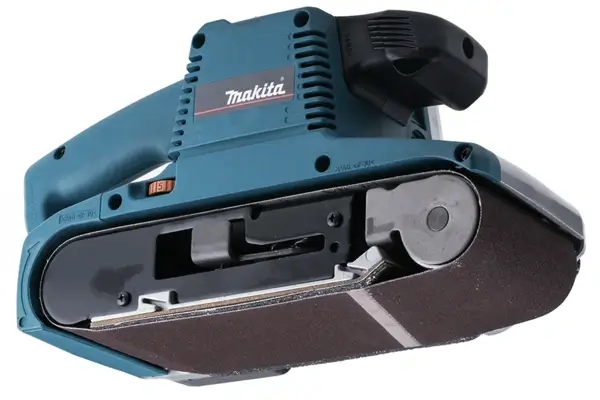Belt sander Risk Assessment

A comprehensive Risk Assessment form for using a belt sander highlights the potential risks and control measures to reduce the likelihood of injury.
A belt sander is a versatile power tool designed specifically for sanding and shaping various materials, including wood, metal, and, in some cases, plastic. This tool is renowned for its efficiency in removing material quickly, making it an indispensable asset for both professional woodworkers and DIY enthusiasts.
Belt sanders are equipped with a continuous loop of sandpaper that moves over a flat surface, enabling rapid smoothing and shaping of the surface. They excel at levelling uneven surfaces, which is crucial for preparing materials for finishing or assembly. Additionally, these tools are effective for stripping away layers of old paint or varnish, allowing for a fresh surface to work with.
Their ability to shape rough edges is particularly beneficial when working with reclaimed wood or raw materials, ensuring a polished and refined look. Belt sanders are available in various sizes and power ratings, making it important for users to select the right model suited to their specific needs and the scale of their projects.
This document is:
- Recognised by local authorities
- Recognised by principal contractors
- Suitable for CDM sites
- Approved by H&S managers
It increases your chance of winning tenders and has been written by trained health and safety professionals.
If you want others to have confidence in your company, download and buy the proper documents today.
As with all our documents, our risk assessments are in Word™ format, available for instant download and use, and only need to be bought once.
Once you buy and download this document, it’s yours for life to use repeatedly.
Download today's risk assessment, put your company details on it, and use it immediately.
Give people confidence in you, your company, your products and services.
Some sample text from this document reads:
‘Knees damaged (from kneeling)'
• Musculoskeletal problems in the knees may occur if body weight is predominantly on the knees
• Provision of suitable PPE for knee protection, either in the form of workwear with integral knee protection (recommended) or independent knee pads
• Raise work off the floor when possible to eliminate kneeling or squatting
• Avoid remaining in one posture for extended lengths of time
Why not browse the HSEDocs catalogue of method statements, risk assessments, COSHH assessments, or industry-specific packages?
GET THIS DOCUMENT
£8.99+VAT
- Available in Word™
- Fully customisable
- Add your Company Logo
- UK & EU Compliant

 CART
CART 